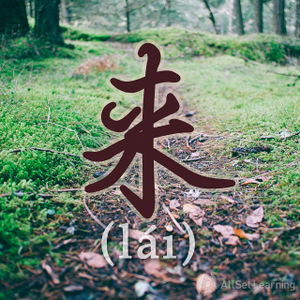Direction complement "-qilai"
-
Level
-
Similar to
-
Used for
-
Keywords
起来 (qǐlái) comes up very frequently in Chinese and can be used both literally and figuratively. This is a little like the usage of "up" in English which can be used literally, as in "stand up," or figuratively, as in "add up."
Contents
Expressing an upward movement
起来 can be used to express an upward movement like "up", as in the English examples of "stand up" or "pick up."
- 请大家 站 起来 。 Please stand up.
- 快点 把 垃圾 捡 起来。Quickly pick up the trash.
Expressing an initial judgement
起来 can also be used to express a preliminary judgement. 起来 is used here to express that the speaker has only just initiated an action, and based on that, has made a quick judgement. It is used in the following structure:
Subject + Verb + 起来 + Adjective
This expresses that the subject seems adjective when the action of the verb is performed. This structure is frequently used with perception verbs such as 看, 听, 尝 etc.
Some examples:
- 他 看 起来 很 友好。He looks very friendly.
- 这件事情听 起来 有点 复杂。This matter sounds a little bit complex.
- 你点的菜 尝 起来 味道 不错。The dishes that you ordered tastes good .
- 这 件 衣服 摸 起来 很 舒服 。These clothes feel very comfortable.
See also
Sources and further reading
Books
- Chinese Grammar - Broken down into 100 items - Basic and Intermediate Levels (汉语语法百项讲练 - 初中级) (pp. 25-31) →buy
- Boya Chinese Elementary Starter 2 (博雅汉语初经起步篇) (pp. 80)→buy
- New Practical Chinese Reader 5 (新实用汉语课本5) (pp. 134-5)→buy
- 40 Lessons for Basic Chinese Course (基础汉语40课下册) (pp. 355-6)→buy
- Integrated Chinese: Level 2, Part 2 (p. 20) →buy
Websites



